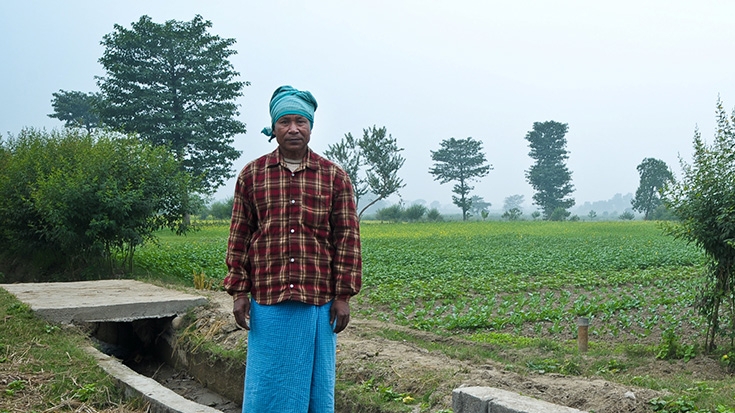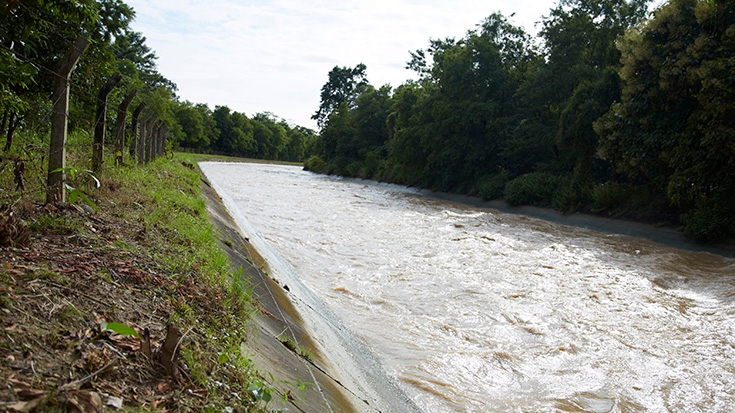Challenge
Some of the key challenges that categorize irrigation development in Nepal are old infrastructure and poor performances of the existing irrigation systems; poor system efficiency and under–utilization of canal water; weak participation of Water Users Associations (WUAs), weak institutional capacity; weak linkages between agriculture and irrigation; continuation of subsistence agriculture practices in command area etc. Additionally, due to riparian issues, in Nepal, it has not been possible to tap the major river systems for irrigation development, which discharge substantial amount of water even during the dry season. Most of the irrigation systems are thus fed by medium or small rivers, which almost entirely depend on the rain. Moreover, water use efficiency and agricultural productivity remain low in both the traditional farmer-managed schemes and the large public irrigation systems. Major impediments in increasing agricultural productivity in Nepal include: i) the lack of irrigation (only 28% of the total agricultural land (4.21 million ha) is irrigated), ii) unavailability of inputs such as quality seeds and fertilizers, iii) pest complex, and iv) lack of access to advisory services and marketing.
Solution
The project works mainly through four components (A) Irrigation Infrastructure Development and Improvement: improving irrigation water service delivery in selected schemes in mountain, hill and Terai districts of three western regions (40 districts) of the country and improving and expanding ground water irrigation in Terai; (B) Irrigation Management Transfer: improving service performance and service delivery in four selected agency managed irrigation schemes in the Terai through irrigation management transfer to the water user associations (WUAs); (C) Institutional and Policy Support for Improved Water Management : helping institutional strengthening for more effective water resources management; and (D) Integrated Crop and Water Management: increasing production and profitability of agriculture.
The project integrates the irrigation system rehabilitation and improved irrigation services with downstream agricultural activities to achieve its objective. The agriculture component also provides agricultural extension services that make best use of irrigation water, and meet farmer needs. It also addresses the issue of insufficient integration between agriculture and water management interventions in order to derive full benefits from investments in irrigation.
Results
The project is showing good results at the field level in terms of meeting the project objective of increasing agricultural productivity, as well as improving water use efficiency and enabling water users to manage irrigation systems. Significant gains have been made in terms of increasing agricultural productivity since 2007. For instance: cropping intensities have increased from 168 to 220 percent and yields of major staples namely rice, wheat, maize and potato have increased, respectively, by 52, 53, 53 and 51 percent over the baseline. Introduction of equipment such as mini-power tillers, winnowing machines, seeders have helped, especially women farmers, in easing agricultural operations. A recent study by IWRMP has shown that the use of power tiller (over traditional bullock drawn system) has saved the cost of field preparation by 75%. Construction of storage centers have allowed farmers to sell their produce when the price is good.
In addition, A Water Resources Information Center (WRIC) has been established and a Water Resources Information System (WRIS) has been developed, and is operational and publicly available. WRIC is facilitating the process of collecting data and information to develop river basis management plans in addition to providing water related data to key stakeholders. River basin offices have been established and equipped in the Karnali and Narayani River Basins and 9 hydrological and 23 meteorological telemetric systems have been established in the Babai, Karnali, and Rapti River Basins. An Integrated Water Resources Policy has been prepared, which is in the process of obtaining approval from the government. The formulation of Integrated Water Resources Act has been initiated.


